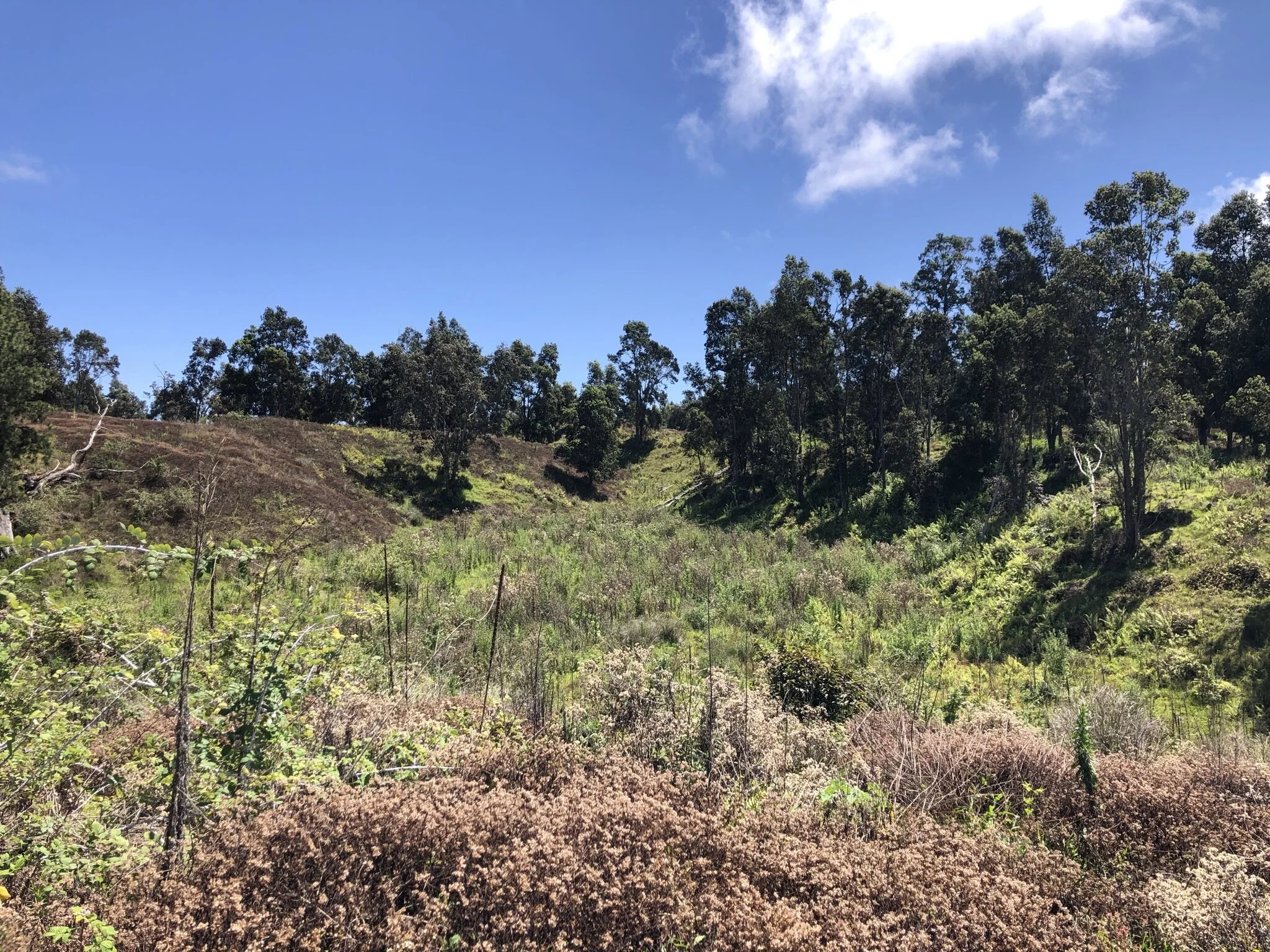
Impacts of TLSB
What TLSB does:
The Twolined Spittlebug (TLSB) is considered one of the most serious pasture insect pests in the tropics. Since arriving in Hawaii it has progressively destroyed pastures due to its severe impacts to grasses. Some areas have seen complete loss of grasses within 1 year.
-

Before TLSB
2015: Site vegetation was composed mainly of grasses, some legumes, and a few forbs.
-

After TLSB
2019: Grass had disappeared almost entirely and the site is dominated by thorny, toxic, inedible weeds.
TLSB Impacts
Hawaii’s Agriculture.
TLSB is having a massive impact to Hawaii’s agricultural livestock industries. The grasses that TLSB kills support about 70% of the cattle in the state. As damages accrue on a ranch, herds are being reduced. The loss of production is estimated at $133/ac. Initial recovery costs for severely damaged pasture is estimated at over $500/acre and recovery is expected to take up to 10 years.
Healthy grazing lands are not only integral to Hawaii’s livestock industries, they are also provide important ecosystem services such as aesthetic value, open space, watershed function and wildlife habitat.
Hawaii’s Food Security.
Hawaii’s livestock industry is extremely important to Hawaii’s food security and economy
Cattle production is the largest producer of protein in the Islands
Cattle is the third largest agricultural commodity in the state
Sheep and other game wildlife also rely on the grass pastures and rangelands that TLSB is impacting
Hawaii’s Watersheds.
TLSB impacts to watersheds:
Reduction in grass cover results in changes to the plant community and in some cases soil erosion
Changes in plant community impact watershed function
TLSB impacts on water quality:
Reduction in grass cover results in soil erosion
Runoff makes its way to streams and oceans
Sediment does damage to coral reefs
TLSB impacts on forests:
Kills grass under forest
Provides opportunities for weeds to invade.
Hawaii’s Recreational Landscape.
TLSB turns grasslands into thorny and impenetrable weed thickets. The grass meadows in Kona are quickly disappearing, and the rolling grass hills of Waimea and Kohala are at risk.
Some landscape-based activities that will be impacted are:
Hiking: Weeds that are taking the place of grass are often thorny and impenetrable, limiting access.
View planes and open space: Beautiful, open, bright green landscapes are disappearing.
Hunting and wildlife watching: Food for wildlife and open spaces are being reduced as invasive weeds take over.
Other: We still do not know the full extent of what TLSB’s impacts will be to our beloved landscapes.
Hawaii’s Culture and Community.
As TLSB impacts our lands, the changes will be felt in our local culture and community:
Paniolo heritage: Our Paniolo heritage is intimately tied to the ranching industry. If the industry suffers and jobs are lost, this proud heritage and important part of our local island culture will also be affected.
Local economies and jobs: Ranches not only provide jobs to cowboys, but ranches also employ or use the services of banks, human resources agencies, bookkeepers, lawyers, veterinarians, mechanics, welders, carpenters and other business service providers. Ranches and their employees are also consumers of products and services such as agricultural supply products, lumber, tools and equipment and of course everyday household needs such as food, schools, medical services. If the industry cannot rebound from this pest, jobs will be lost and we will feel the ripple effect throughout our communities.
Community food security: When COVID hit and processing plants on the continent were shut down, we realized just how vulnerable our food system is. Local farmers and ranchers “pivoted” and provided fresh meat and produce to local community food distribution hubs, ensuring their neighbors in their communities did not go without. This kind of resilience is only possible with a healthy, strong community food network made up of successful farmers and ranchers. As TLSB threatens the economic viability of ranching in Hawaii, it also threatens this resilience.

“When you lose that kikuyu grass cover, all kinds of weeds are going to get started”
— Dr. Mark Thorne




